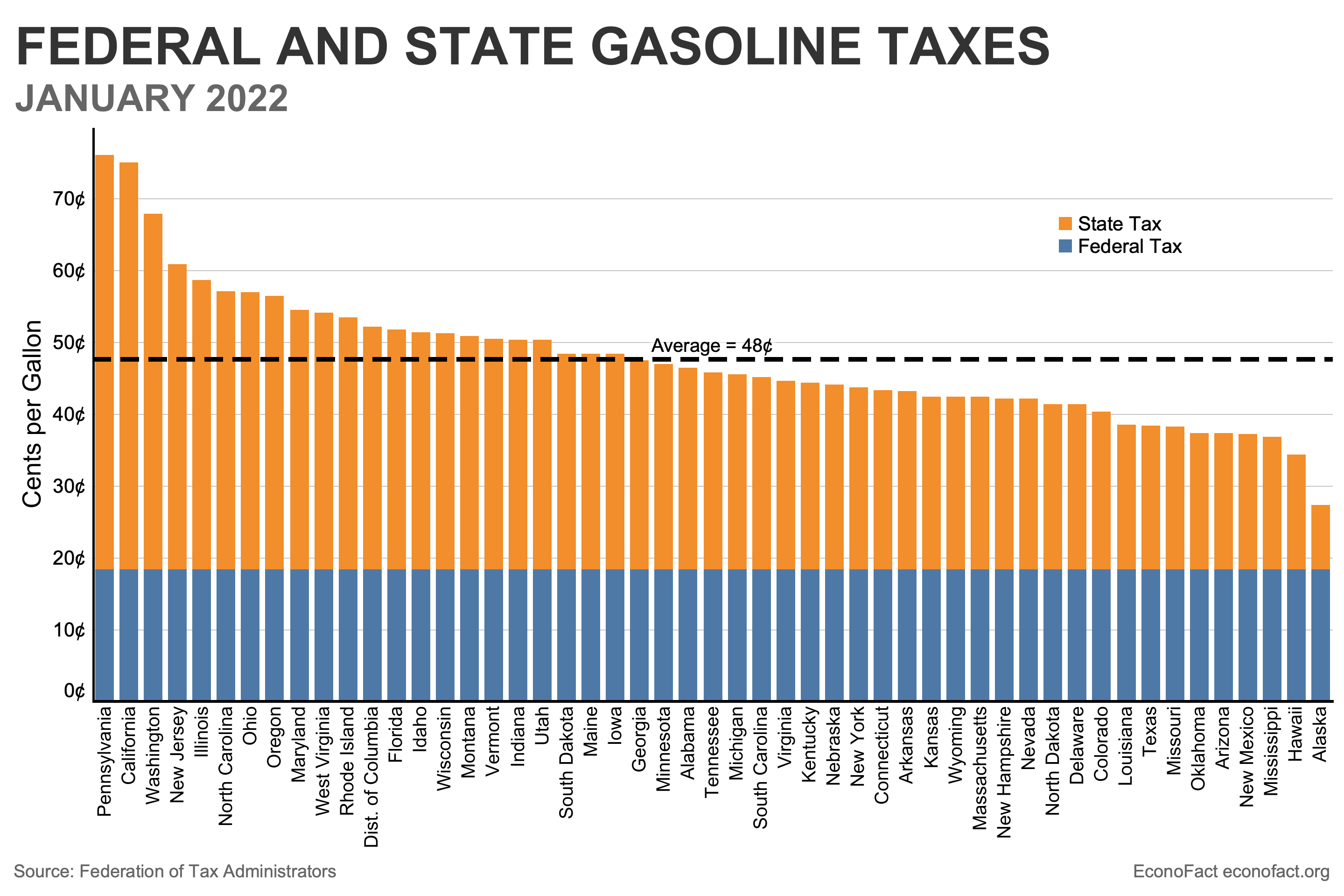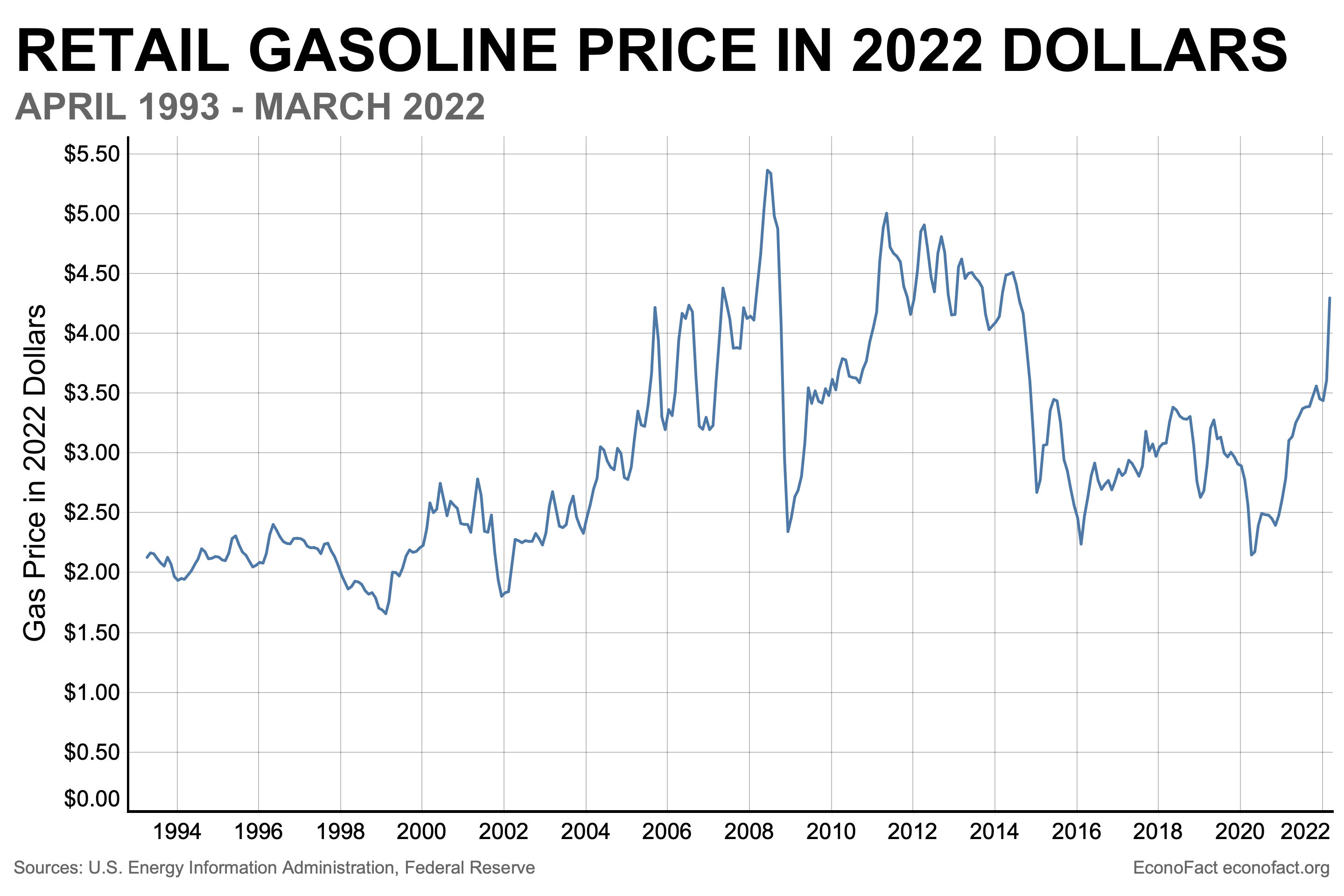Should We Suspend Gas Taxes to Counter High Oil Prices?
Tufts University
The Issue:
The price of gasoline has spiked since the Russian invasion of Ukraine and politicians have been quick to call for a temporary suspension of gasoline excise taxes, either at the federal or state level. Already, three states – Connecticut, Maryland, and Georgia – have temporarily suspended their state excise tax. As Connecticut Governor Ned Lamont put it, “With this bipartisan action, we are taking steps to provide some relief to consumers as they face rising prices due to a number of international dynamics and market instability that go far beyond our state." But is this really helpful? Is it good policy?
Gas prices today are only slightly higher than their average value over the past thirty years when accounting for general price inflation.
The Facts:
- Although they have seen a steep increase in a short period of time, gas prices today are only slightly higher than their average value over the past thirty years when accounting for general price inflation. Even with the recent spike, inflation-adjusted gas prices were higher in the spring and summer of 2008, and the majority of the months from 2011 through the summer of 2014 (see chart). The more unusual circumstance was the very low gas prices that followed this, in the five years beginning in February 2016. Moreover, the amount that the gas tax contributes to inflation-adjusted prices at the pump has diminished over time. The federal tax on a gallon of gas was last raised in October 1993. Since then, its value has fallen by nearly 45 percent – or, put differently, the 18.4 cents per gallon in 1993 translates to 35.9 cents per gallon in 2022 dollars.
- Gas prices started rising long before the Russian invasion of Ukraine but have spiked up since then. Gas prices hit a low point in April 2020 of $2.15 per gallon at the outset of the COVID recession. Prices started to rise after that as the economy started to recover. Two-thirds of the rise in gas prices since their nadir in the Spring of 2020 occurred prior to this year and reflected the effects of an improving national and world economy. Gas prices spiked by almost 20 percent in nominal (that is, not inflation adjusted) terms in the first two weeks after the invasion of Ukraine on February 24th. But in the second half of March 2022, gas prices began to recede slightly, falling by 1.6 percent even as overall inflation remains high.
- The Russian invasion of Ukraine has brought to the forefront the world’s vulnerability to energy shocks arising from political instability. Russian oil exports account for less than 10 percent of global oil consumption, but demand and supply are sufficiently insensitive to short run changes in price that even small shocks to supply can have large impacts on price – if no other suppliers step up, the price of gas could rise dramatically in the short run to resolve a virtually unchanging demand with a reduction in supply. This price volatility illustrates our vulnerability to oil shocks. True energy security can only be realized through reducing our consumption of petroleum products. Higher gas prices can help move us towards this goal in the longer run by encouraging purchases of more fuel efficient vehicles as well as greater adoption of plug-in hybrid and electric vehicles. With two-thirds of the petroleum we consume used in transportation, reducing consumption in transportation will be critical to reducing our vulnerabilities to oil shocks.
- Cutting the gas tax would not have much of an effect on prices at the pump and undermines our efforts to cut our reliance on oil. The average state and federal gasoline excise tax rate is $0.48 per gallon. Zeroing out all federal and state fuel excise taxes would cut the price of gasoline by roughly 10 percent. Based on recent estimates of how the consumption of gasoline responds to short run fluctuations in price, a 10 percent reduction in gas prices would increase demand for gas by a little over 3 percent. Even this small increase in demand is counterproductive at the time when we should be discouraging consumption of gasoline, not promoting it. Anything that reduces the demand for oil products will reduce Russia’s political leverage internationally.
- Revenues from taxes on gasoline fund road and bridge construction and maintenance. Federal taxes on motor fuel fund the Highway Trust Fund that was created by the Federal-Aid Highway Act of 1956. Revenues from these taxes and have been an important source of funding for highways and mass transit. It is estimatedthat federal excise taxes on fuels will result in revenues of $42 billion in 2022, with 60 percent of these coming from the tax on gasoline. These revenues are important because surface transportation in the United States is in poor condition; the U.S. Government Accountability Office reported that the oldest portions of the Interstate Highway System are approaching 60 years of age, and over 7 percent of the nation's bridges were rated in poor condition in 2019 and the American Society of Civil Engineers has given poor grades to the country's roads and bridges and estimated an $786 billion backlog of highway and bridge capital needs in 2021. Cutting the gas tax will reduce revenues earmarked for improving transportation infrastructure.

Click here for a larger version the graph.
- States rely on this revenue to support and maintain transportation infrastructure as well. State motor fuels tax rates range from a low of 9 cents per gallon of gasoline in Alaska to a high of 57.6 cents per gallon in Pennsylvania (see chart). Annual receipts in 2019 totaled $50.5 billion for the states with roughly 80 percent of the revenue earmarked for state and local roads. Another 10 percent is earmarked for mass transit and the remainder is used for general and non-highway purposes, on average.
What this Means:
Gas prices had a dramatic spike in the first weeks after the invasion of Ukraine but, most recently, have begun to stabilize and even fall. This raises the possibility that state and federal lawmakers will cut the gas tax just as the problem of high gas prices begins to recede. But the problems with cutting the gas tax run deeper than just one of timing. This may explain why there has never been a federal gas tax holiday and any prior state gas tax holiday has been mostly limited to a few days. In fact, there is an important case to be made for higher taxes on gasoline because they pay for needed federal and state transportation infrastructure and also in order to reduce our dependence on oil in the long-term – for environmental reasons and to diminish our vulnerability to oil shocks stemming from geopolitical risks. But there are also distributional considerations, and some households are being hard hit by higher energy prices. The burden of this impact can be ameliorated through aid that is better targeted to those most affected.
Like what you’re reading? Subscribe to EconoFact Premium for exclusive additional content, and invitations to Q&A’s with leading economists.

